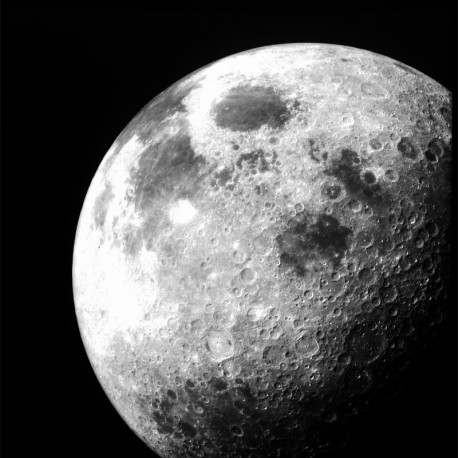 View larger
View larger
Crater Creations
New activity
This is an activity about impact craters. Learners will experiment to create impact craters and examine the associated features.
Open Activity
How-to Video
-
Rating
-
Participants Enjoyed the ActivityParticipants Learned from This ActivityActivity Instructions Were Clear and Easy to FollowWould Recommend
Related Programming Resources
Reviews
more popular with adults
Adults were really excited about this activity, but kids didn't seem drawn to it. Messy, but I would recommend.
Crater Creations
I did this with a group of 11 kids and they loved it. I showed images of craters first and introduced some vocabulary. I was thrilled to hear the kids excitedly screaming about the rays created by their impacts. I think next time I do this I will not use the sand. It didn't seem necessary.
Fun, but messy
This was a fun, active experiment, good for moving around. The participants had a good time flinging rocks into "moon sand" (flour and cocoa powder, in our case), then looking at the resulting spray, and measuring how wide the spray was. Each group took a different approach to flinging the rocks- some measured from different heights, others from different angles. It was, however, very very messy. Either invest in lots of tarps to put on the ground for the experiment, or move it indoors. Its also a very short activity; it would be hard to stretch this activity beyond 20 minutes, so par it with more moon/space experiments, such as the playdough planets or the strange new planet activity.
Makes tossing rocks educational!
This activity was so much fun! The general gist of it is that kids toss rocks at a lunar surface (as prepared by you, the facilitator) and draw comparisons between the impact craters they make and the ones they see on the lunar surface. As you’ve probably already guessed, this engages but the terrifying-but-fun instinctual impulse to throw things as well as creative and fine motor skills (“If I just toss it a *little* more horizontally, will it make a differently shaped crater?”). You may have to tailor it somewhat for your specific environment (not every library has a dozen safety glasses on hand, or room for more than one box of lunar surface at a time), but this activity is a lot of fun and makes for a nice pairing with other Moon-related crafts and activities!
I suggest:
- Making a treasure hunt out of the impactor selection process. Kids love being given a mission, and I asked ours to go out and find the most unique object they could (that was easy to clean, non-fragile, and waterproof) to turn into an impactor, and they loved it! We spent a fair bit of time discussing what objects might make the biggest splash or the most interesting crater, and several of our attendees took the opportunity to swap out their impactor as they learned more about mass, velocity, and surface area.
- Reducing the sand level somewhat, especially if you need to make more than one box. We had the recommended four inches in the bottom of ours (not including the flour and cocoa), and even the deepest crater never truly went deeper than one inch. I think two inches would be plenty if you’re short on sand.
- If you don’t have a sifter, that’s alright! Just find yourself an old flyswatter and sift your cocoa through that. Last time I went hunting for a sifter in our area thrift stores, I couldn’t find a single one. Of course, a wire sieve might work too, if you have a better memory than I do and remember to bring yours from home.
- If you can, provide some sort of snack after. The kids (and their parents) will be smelling cocoa for hours afterward, and feeling correspondingly hungry. If you use oats instead of sand as the base of your lunar surface and have an Easy Bake (TM) oven on hand, you could theoretically turn this into an even larger, even *messier* activity afterward. Just add chocolate chips and whatnot … and make sure everybody washes their hands and impactor before throwing it in the box!
We paired this activity with another from the STAR_net Clearinghouse, the “Moon Mythbusters” activity. Doing so provided us with a nice balance between an active, physically engaging craft (“Crater Creations”) and a slower, more thought-provoking one (“Moon Mythbusters”). We did “Crater Creations” first, but I could easily see a person switching the order on those, and using the possibility of throwing things (that is, making impact craters) as a reward for finishing the puzzle involved in “Moon Mythbusters.” In a classroom environment, educators would likely be able to build a full class period around each of these activities, but we find that with the smaller, highly focused group of kids in Makerspace, we blaze through them quickly enough to merit two at a time.



